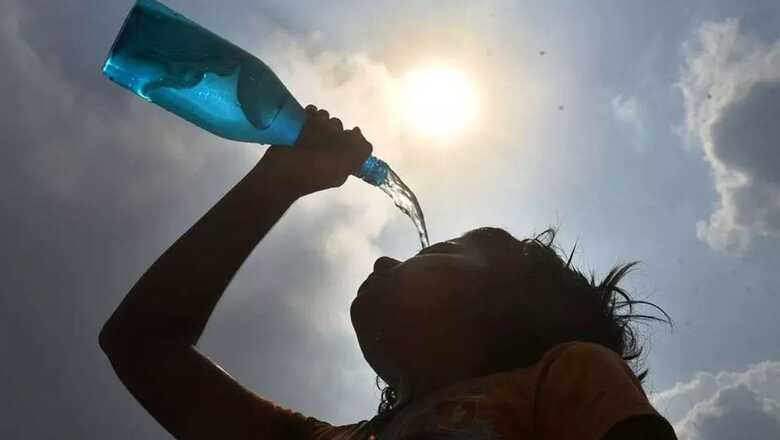
views
Several regions of north India have been scorching hot over the past few days due to the deadly heatwaves. It is getting harder for the body to adapt to the extreme weather when the temperature rises above 45 degrees. Our bodies respond to high heat by activating their built-in cooling mechanisms, which include perspiration, quicker heartbeats, and dilated blood vessels that allow more blood to flow through them. The body can also develop a susceptibility to heat exhaustion and heat stress, which can result in symptoms including weariness, nausea, cramping, and lightheadedness. Extreme heat occasionally can cause multiple organ failure.
The hot summer days are here, and when the temperature soars above 45 degrees Celsius (113 degrees Fahrenheit), our bodies go through a number of fascinating changes. Our physiology is negatively impacted by the severe heat, which results in a variety of reactions that enable us to adapt to and survive in these harsh environments. As mercury levels rise, sweat becomes our ally, blood vessels enlarge to never-before levels, and our hearts beat faster to combat the heat.
SEE HOW OUR BODY REACTS TO EXTREME HEAT HERE:
- Increased perspiration:Sweating is our body’s natural cooling mechanism that is activated as the mercury rises. Sweat glands work extra hard as the temperature rises above 45 degrees to release perspiration, which evaporates on the skin and has the cooling effect. While sweating helps control body temperature and prevents overheating, it also causes electrolyte and water loss. It becomes essential to rehydrate properly and replenish lost fluids to prevent dehydration and its associated health problems.
- Blood vessel growth:Vasodilation is the process through which our blood vessels widen in reaction to intense heat. Blood arteries close to the skin’s surface enlarge when the temperature rises above 45 degrees, allowing more blood to pass through them. This expansion aids in heat dissipation and supports temperature regulation in the body. However, the expansion of blood vessels occasionally results in a reduction in blood pressure, which can produce lightheadedness or fainting. In order to maintain cardiovascular health during intense heat, it is crucial to drink enough of water and take rests in cooler settings.
- A rapid heartbeat:Our pulse rate often increases when exposed to oppressive temperatures above 45 degrees. High temperatures are viewed as a stressor by the body, which responds by raising cardiac output to more effectively transport oxygen and nutrients to the cells. The body’s cooling systems are supported and crucial organ function is preserved by the heart beating more quickly to maintain an adequate blood flow throughout the body. To avoid overexertion, people with pre-existing heart issues should take additional care when it’s really hot outside.
- Sunburn and skin changes:Multiple skin-related problems can result from prolonged exposure to temperatures above 45 degrees. The skin may become dry, sensitive, and more vulnerable to sunburn due to the intense heat. The sun’s ultraviolet (UV) radiation intensifies, posing a higher danger for sunburn and long-term skin damage. To avoid damaging effects on the skin, it is essential to protect it with sunscreen, protective clothes, and shade during the hottest parts of the day.
- Heatstroke and heat exhaustion:Heat-related disorders like heat exhaustion and heatstroke can result from excessive heat because it can strain the body’s internal temperature-control systems to their breaking point. When the body loses a lot of water and electrolytes from excessive sweating, it develops heat exhaustion, which causes symptoms including nausea, weariness, disorientation, and cramping in the muscles. Heatstroke, a potentially fatal condition marked by a body temperature above 40 degrees Celsius (104 degrees Fahrenheit), can develop from heat exhaustion if it is not treated. To avoid irreparable harm, heatstroke requires rapid medical intervention.




















Comments
0 comment